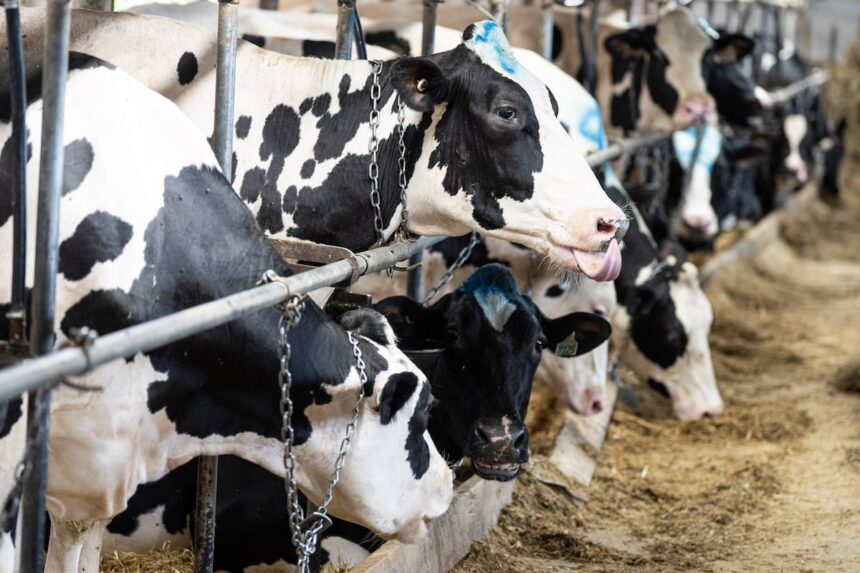As U.S. industry groups accuse Canada of violating the terms of a critical trade agreement over dairy imports, tensions are rising amid what was supposed to be a settled matter under the United States-Mexico-Canada Agreement (USMCA).
The latest chapter in this ongoing dairy dispute highlights both the fragility of North American trade relations and the outsized political importance of agricultural sectors in bilateral relations. Having covered trade disputes across multiple continents, I’m struck by how consistently dairy remains a flashpoint in an otherwise strong Canada-U.S. relationship.
“We’ve seen this pattern repeated since NAFTA was first negotiated,” said Alison Thompson, trade policy analyst at the Peterson Institute for International Economics, when I spoke with her last week. “Canadian protection of its dairy sector through supply management continues to frustrate U.S. producers who see untapped market potential.”
The conflict centers on Canada’s administration of tariff-rate quotas (TRQs) for dairy products. U.S. dairy groups, including the National Milk Producers Federation and U.S. Dairy Export Council, claim Canadian policies deliberately limit market access for American dairy products despite USMCA commitments.
According to the U.S. Trade Representative’s office, Canada’s implementation approach effectively reserves large portions of quota allocations for Canadian processors rather than retailers and distributors more likely to import American products. The impact has been significant – U.S. dairy exports to Canada reached just $979 million in 2022, well below projections made when the agreement was signed.
During my recent reporting trip to Wisconsin dairy country, the frustration was palpable. Dave Merkel, a third-generation dairy farmer operating 280 miles from the Canadian border, told me, “We fought hard for that agreement. What good is a deal if the other side finds ways around the commitments they made?”
The dispute has already gone through one round of formal settlement procedures. In January 2022, a USMCA dispute panel ruled against Canada’s quota allocation system. While Canadian officials insist they’ve made necessary adjustments, U.S. industry representatives claim the changes were cosmetic rather than substantive.
“This isn’t about technicalities – it’s about market access that was explicitly negotiated,” said Jaime Castañeda of the U.S. Dairy Export Council when I interviewed him by phone. “Canada agreed to specific terms that would allow incremental access to their market, and they’re deliberately circumventing those terms.”
The Canadian government maintains it has fully implemented the panel’s ruling. Marie-Claude Bibeau, Canada’s Minister of Agriculture, defended her country’s approach, stating, “Our supply management system supports Canadian farmers and provides stability in rural communities. We’ve made the required changes while protecting the integrity of our dairy sector.”
Behind these diplomatic exchanges lies a complex economic reality. Canada’s supply management system for dairy has existed for decades, controlling domestic production while imposing steep tariffs on imports to maintain price stability for Canadian producers. The system supports approximately 10,800 dairy farms across Canada, according to Agriculture and Agri-Food Canada data.
For the United States, with its larger and more export-oriented dairy industry, these protections represent lost opportunity. The U.S. dairy sector generates approximately $753 billion in economic impact annually and supports over 3 million jobs, according to the International Dairy Foods Association.
The dairy dispute illustrates the challenges of implementing trade agreements even between close allies. When I covered the USMCA negotiations in 2018-2019, dairy was among the final and most contentious issues resolved. The agreement, which replaced NAFTA in 2020, was supposed to provide certainty for businesses across North America.
What makes this dispute particularly significant is its potential to trigger broader trade tensions. The U.S. Trade Representative’s office has indicated it may consider additional enforcement actions if the issue remains unresolved, potentially including targeted tariffs on Canadian goods.
“Trade disputes have a way of expanding beyond their initial scope,” explained Dr. Jennifer Walsh, professor of international trade law at Georgetown University. “What starts as a specific complaint about dairy quotas can quickly escalate if political pressures mount on either side.”
For consumers in both countries, the implications remain limited for now. Canadian dairy prices remain stable but higher than U.S. equivalents, while American consumers see little direct impact from the dispute.
However, should the conflict escalate to retaliatory measures, the economic consequences could spread to other sectors. During previous trade tensions between the countries, tariffs affected everything from steel and aluminum to lumber and manufactured goods.
The dispute also reflects broader questions about economic sovereignty in trade agreements. Standing near Parliament Hill in Ottawa last month, I watched as dairy farmers demonstrated against what they called “foreign interference” in Canadian agricultural policy.
“This isn’t just about milk and cheese,” protest organizer Marie Tremblay told me. “It’s about whether Canadians can determine our own food systems or if trade agreements mean giving up control over how we produce what we eat.”
As both nations prepare for potential further dispute settlement proceedings, the case serves as a reminder that trade agreements, however comprehensive, often contain ambiguities that surface during implementation. Having reported on similar disputes in the EU, Southeast Asia, and across the Americas, I’ve observed how frequently agricultural protections become the most intractable issues in otherwise successful trade relationships.
The coming months will determine whether this dispute can be resolved through existing USMCA mechanisms or if it will require higher-level political intervention. With both Canadian and American officials already positioning for their respective domestic audiences, finding a mutually acceptable solution may prove challenging even as the broader trading relationship remains strong.






